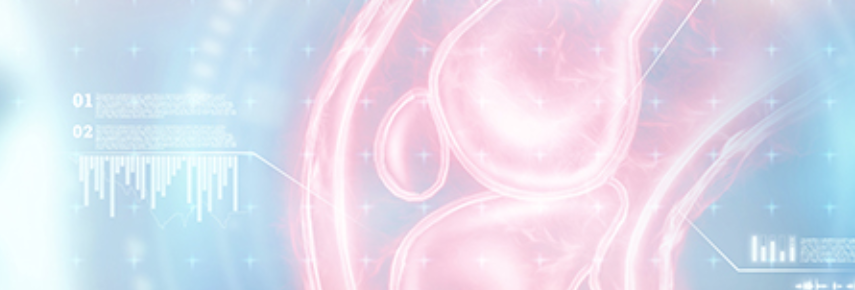Dante P I Capaldi, Norman B Konyer, Melanie Kjarsgaard, Anna Dvorkin-Gheva, Ronald J Dandurand, Parameswaran Nair, Sarah Svenningsen
{"title":"用非对比潮气呼吸 1H 磁共振成像评估严重哮喘患者的特殊通气情况","authors":"Dante P I Capaldi, Norman B Konyer, Melanie Kjarsgaard, Anna Dvorkin-Gheva, Ronald J Dandurand, Parameswaran Nair, Sarah Svenningsen","doi":"10.1148/ryct.230054","DOIUrl":null,"url":null,"abstract":"<p><p>Purpose To determine if proton (<sup>1</sup>H) MRI-derived specific ventilation is responsive to bronchodilator (BD) therapy and associated with clinical biomarkers of type 2 airway inflammation and airways dysfunction in severe asthma. Materials and Methods In this prospective study, 27 participants with severe asthma (mean age, 52 years ± 9 [SD]; 17 female, 10 male) and seven healthy controls (mean age, 47 years ± 16; five female, two male), recruited between 2018 and 2021, underwent same-day spirometry, respiratory oscillometry, and tidal breathing <sup>1</sup>H MRI. Participants with severe asthma underwent all assessments before and after BD therapy, and type 2 airway inflammatory biomarkers were determined (blood eosinophil count, sputum eosinophil percentage, sputum eosinophil-free granules, and fraction of exhaled nitric oxide) to generate a cumulative type 2 biomarker score. Specific ventilation was derived from tidal breathing <sup>1</sup>H MRI and its response to BD therapy, and relationships with biomarkers of type 2 airway inflammation and airway dysfunction were evaluated. Results Mean MRI specific ventilation improved with BD inhalation (from 0.07 ± 0.04 to 0.11 ± 0.04, <i>P</i> < .001). Post-BD MRI specific ventilation (<i>P</i> = .046) and post-BD change in MRI specific ventilation (<i>P</i> = .006) were greater in participants with asthma with type 2 low biomarkers compared with participants with type 2 high biomarkers of airway inflammation. Post-BD change in MRI specific ventilation was correlated with change in forced expiratory volume in 1 second (<i>r</i> = 0.40, <i>P</i> = .04), resistance at 5 Hz (<i>r</i> = -0.50, <i>P</i> = .01), resistance at 19 Hz (<i>r</i> = -0.42, <i>P</i> = .01), reactance area (<i>r</i> = -0.54, <i>P</i> < .01), and reactance at 5 Hz (<i>r</i> = 0.48, <i>P</i> = .01). Conclusion Specific ventilation evaluated with tidal breathing <sup>1</sup>H MRI was responsive to BD therapy and was associated with clinical biomarkers of airways disease in participants with severe asthma. <b>Keywords:</b> MRI, Severe Asthma, Ventilation, Type 2 Inflammation <i>Supplemental material is available for this article.</i> © RSNA, 2023 See also the commentary by Moore and Chandarana in this issue.</p>","PeriodicalId":21168,"journal":{"name":"Radiology. Cardiothoracic imaging","volume":"5 6","pages":"e230054"},"PeriodicalIF":3.8000,"publicationDate":"2023-12-01","publicationTypes":"Journal Article","fieldsOfStudy":null,"isOpenAccess":false,"openAccessPdf":"https://www.ncbi.nlm.nih.gov/pmc/articles/PMC11163249/pdf/","citationCount":"0","resultStr":"{\"title\":\"Specific Ventilation in Severe Asthma Evaluated with Noncontrast Tidal Breathing <sup>1</sup>H MRI.\",\"authors\":\"Dante P I Capaldi, Norman B Konyer, Melanie Kjarsgaard, Anna Dvorkin-Gheva, Ronald J Dandurand, Parameswaran Nair, Sarah Svenningsen\",\"doi\":\"10.1148/ryct.230054\",\"DOIUrl\":null,\"url\":null,\"abstract\":\"<p><p>Purpose To determine if proton (<sup>1</sup>H) MRI-derived specific ventilation is responsive to bronchodilator (BD) therapy and associated with clinical biomarkers of type 2 airway inflammation and airways dysfunction in severe asthma. Materials and Methods In this prospective study, 27 participants with severe asthma (mean age, 52 years ± 9 [SD]; 17 female, 10 male) and seven healthy controls (mean age, 47 years ± 16; five female, two male), recruited between 2018 and 2021, underwent same-day spirometry, respiratory oscillometry, and tidal breathing <sup>1</sup>H MRI. Participants with severe asthma underwent all assessments before and after BD therapy, and type 2 airway inflammatory biomarkers were determined (blood eosinophil count, sputum eosinophil percentage, sputum eosinophil-free granules, and fraction of exhaled nitric oxide) to generate a cumulative type 2 biomarker score. Specific ventilation was derived from tidal breathing <sup>1</sup>H MRI and its response to BD therapy, and relationships with biomarkers of type 2 airway inflammation and airway dysfunction were evaluated. Results Mean MRI specific ventilation improved with BD inhalation (from 0.07 ± 0.04 to 0.11 ± 0.04, <i>P</i> < .001). Post-BD MRI specific ventilation (<i>P</i> = .046) and post-BD change in MRI specific ventilation (<i>P</i> = .006) were greater in participants with asthma with type 2 low biomarkers compared with participants with type 2 high biomarkers of airway inflammation. Post-BD change in MRI specific ventilation was correlated with change in forced expiratory volume in 1 second (<i>r</i> = 0.40, <i>P</i> = .04), resistance at 5 Hz (<i>r</i> = -0.50, <i>P</i> = .01), resistance at 19 Hz (<i>r</i> = -0.42, <i>P</i> = .01), reactance area (<i>r</i> = -0.54, <i>P</i> < .01), and reactance at 5 Hz (<i>r</i> = 0.48, <i>P</i> = .01). Conclusion Specific ventilation evaluated with tidal breathing <sup>1</sup>H MRI was responsive to BD therapy and was associated with clinical biomarkers of airways disease in participants with severe asthma. <b>Keywords:</b> MRI, Severe Asthma, Ventilation, Type 2 Inflammation <i>Supplemental material is available for this article.</i> © RSNA, 2023 See also the commentary by Moore and Chandarana in this issue.</p>\",\"PeriodicalId\":21168,\"journal\":{\"name\":\"Radiology. Cardiothoracic imaging\",\"volume\":\"5 6\",\"pages\":\"e230054\"},\"PeriodicalIF\":3.8000,\"publicationDate\":\"2023-12-01\",\"publicationTypes\":\"Journal Article\",\"fieldsOfStudy\":null,\"isOpenAccess\":false,\"openAccessPdf\":\"https://www.ncbi.nlm.nih.gov/pmc/articles/PMC11163249/pdf/\",\"citationCount\":\"0\",\"resultStr\":null,\"platform\":\"Semanticscholar\",\"paperid\":null,\"PeriodicalName\":\"Radiology. Cardiothoracic imaging\",\"FirstCategoryId\":\"1085\",\"ListUrlMain\":\"https://doi.org/10.1148/ryct.230054\",\"RegionNum\":0,\"RegionCategory\":null,\"ArticlePicture\":[],\"TitleCN\":null,\"AbstractTextCN\":null,\"PMCID\":null,\"EPubDate\":\"\",\"PubModel\":\"\",\"JCR\":\"Q1\",\"JCRName\":\"RADIOLOGY, NUCLEAR MEDICINE & MEDICAL IMAGING\",\"Score\":null,\"Total\":0}","platform":"Semanticscholar","paperid":null,"PeriodicalName":"Radiology. Cardiothoracic imaging","FirstCategoryId":"1085","ListUrlMain":"https://doi.org/10.1148/ryct.230054","RegionNum":0,"RegionCategory":null,"ArticlePicture":[],"TitleCN":null,"AbstractTextCN":null,"PMCID":null,"EPubDate":"","PubModel":"","JCR":"Q1","JCRName":"RADIOLOGY, NUCLEAR MEDICINE & MEDICAL IMAGING","Score":null,"Total":0}
引用次数: 0

 求助内容:
求助内容: 应助结果提醒方式:
应助结果提醒方式:


